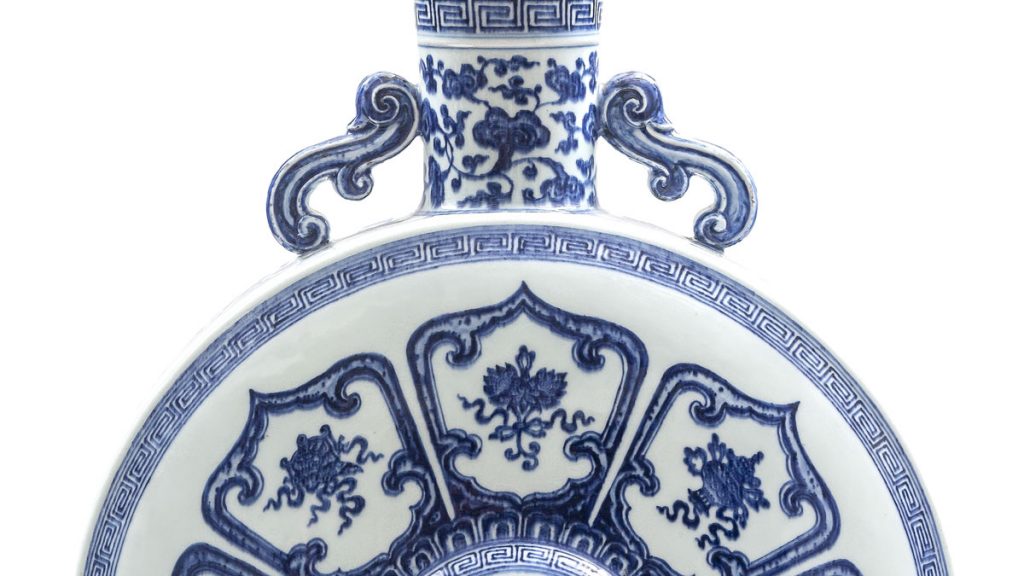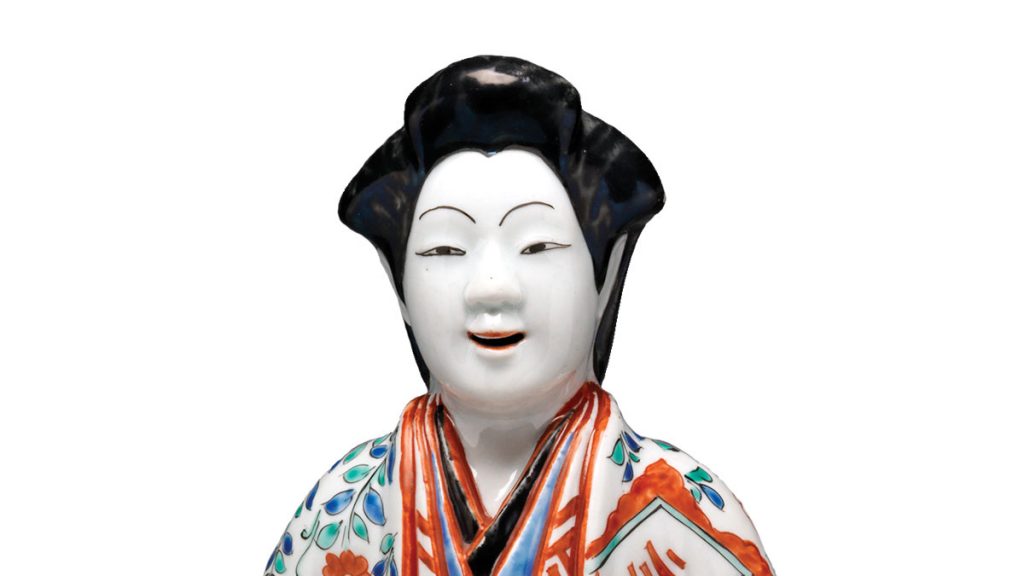Chinese & Japanese Ceramics
China and Japan have been mastering the art of making various forms of earthenware since the Neolithic Period. However, one of the most significant and far-reaching inventions in ceramic history was the discovery of porcelain in China during the Tang dynasty (618-907). Chinese porcelain is composed of two materials: kaolin (a white china clay) and petuntse (pulverised feldspathic rock, also known as china stone). When fired from temperatures in excess of 1250º C the body and the glaze fuse together and the porcelain becomes vitrified. Porcelain is characterized by being white, translucent, impermeable, and is resistant to thermal shock.
China dominated the production of porcelain and its trade for thousands of years. However, the methods of its manufacture spread elsewhere in Asia, notably to Korea and Japan. Porcelain was also traded across Asia, where it inspired the development of tin-glazed earthenware in present-day Iraq in the ninth century. Tin-glaze technology eventually spread throughout the Islamic world and most of Europe, and its decoration was often influenced by imported Chinese porcelain. Inspired by both Chinese and Japanese wares, porcelain was made commercially in Europe from the late seventeenth century. The designs and forms of Chinese and Japanese ceramics continue to reverberate throughout the world today.
Explore Chinese and Japanese Ceramics
1. Pilgrim Flask (detail), China, Qing Dynasty, Qianlong Period and Mark, c.1736-1795, The Robert Murray Bell and Ann Walker Bell Collection of Blue and White Chinese Porcelain, G98.9.1
2. Hulu (Double-gourd) Vase (detail), China, Jingdezhen, Ming Dynasty (1368-1644), The Anne Gross Collection, G15.7.1
3. Roof Sculpture of Equestrian Figure, China, Ming Dynasty (1368-1644), Collection of Ann Walker Bell, G10.4.1
4. Figure of a Courtesan (detail), Japan, Arita, c.1680-1700, The Macdonald Collection, G07.18.17


